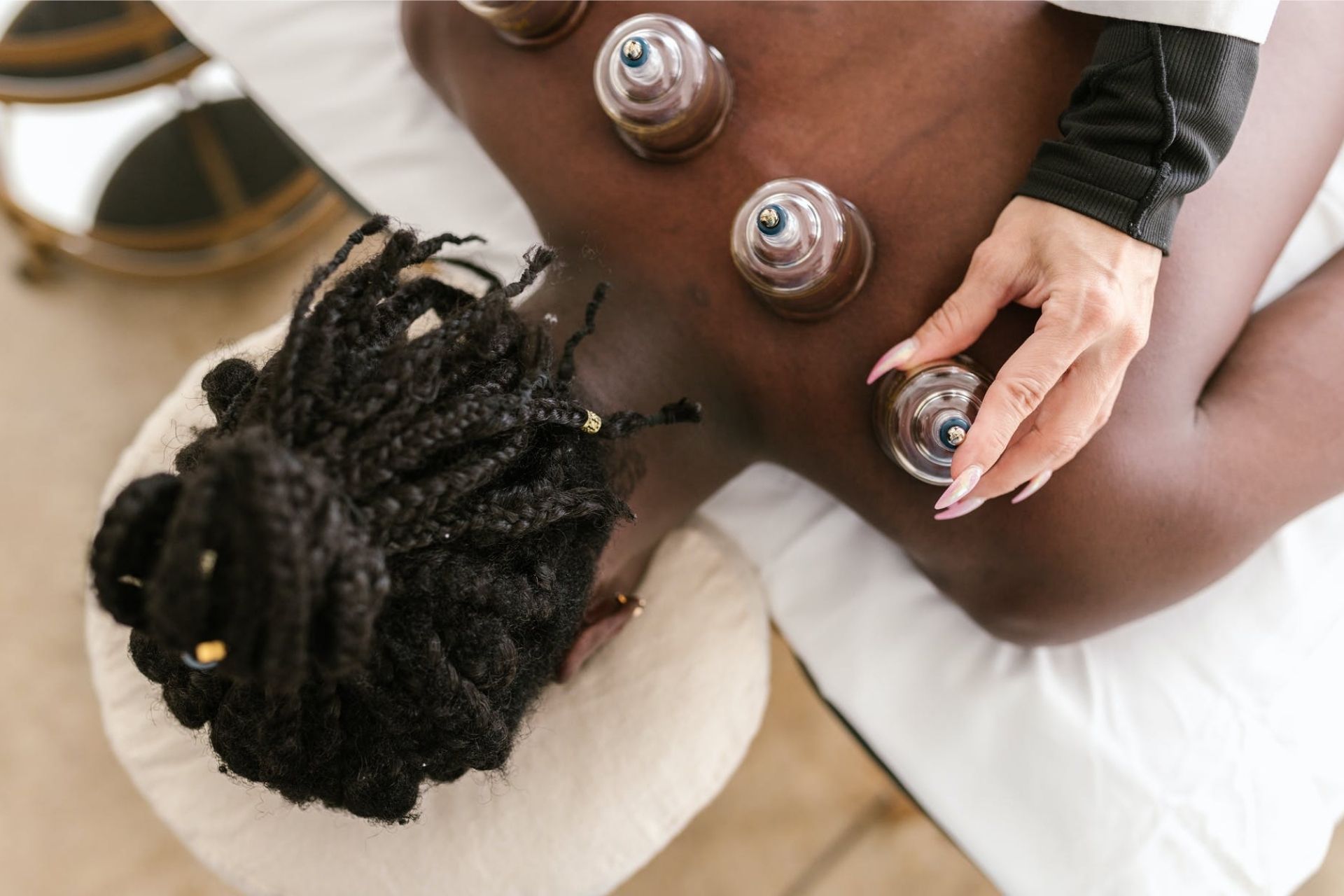
Body + Mind is reader-supported. We may earn an affiliate commission when you buy through some of the links on our site.
Cupping therapy is now a popular form of therapy that people swear by. After hearing the success stories and seeing the aftermath of a session, you may be wondering, “Does cupping therapy work?” The best way to find out if something works for you is to try it, but cupping therapy isn’t for everyone. Here’s a little more about it to help guide you toward your decision of trying out cupping therapy or sticking to other pain relief methods.
Cupping therapy isn’t something new. It’s a form of alternative medicine that’s been tested and improved upon for centuries, dating back to ancient times. Hippocrates, considered one of the most renowned medical professionals, used cupping for many concerns, from minor ailments like ear problems to more significant issues like laryngitis. If ancient experts used it, you could also expect benefits from the procedure that’s lasted through the years.
How does cupping therapy work? To answer that question, you must look at the different types of cupping therapy and analyze which one seems right for you. Cupping can be done dry or wet, though the processes are slightly different.
With dry cupping, an air pump pulls the oxygen out of the cup attached to a patient’s back. Wet cupping is a little different, as it allows for a small needle to make a tiny puncture. Toxins are then supposed to exit the body through minuscule incisions. People afraid of needles may choose dry cupping over wet cupping, so it typically depends on the patient’s preference.
Though these two types are the most common, you might find plenty of other cupping techniques that suit you. One of the other alluring cupping techniques is massage cupping, where the therapist moves the cup around after it has attached itself to the patient’s skin. If that sounds like relaxation, consider trying the process and seeing what benefits you feel.
You might find cupping therapy options at your local massage therapist’s parlor, or you could talk to your doctor for a recommendation. Wellness centers may also offer cupping therapy.
Cupping therapy has plenty of benefits for most of its users. Cupping allows your body to speed up the healing process and minimize any pain. While the process itself does sound painful, many people saw their overall pain reduced after going through cupping therapy. As long as you drink plenty of water after the cupping therapy process, you’ll reap the benefits it offers.
Cupping therapy is used to treat a variety of ailments, such as the following:
Cupping has no limitations on what it can help. If you have an ailment of the muscles, cupping might be the sort of therapy you need. Likewise, there are virtually no drawbacks to cupping therapy as long as you’re able to get it. While success cannot always be proven with this method, many people have felt their chronic pain lessen over time with cupping therapy.
You should also note that, while cupping can help you with your ailments, having some bruising on your back and looking like you got into a fight is relatively standard. As long as you hydrate and take care of your body afterward, you’ll find that the bruising fades with time.
If you’ve started to feel muscle pain or discomfort in your back, shoulder or neck and none of your usual methods of pain relief have worked, you might try cupping therapy. It can provide you with the comfort you need — plus, it’s an exciting form of treatment that you can tell all your loved ones about and encourage those with pain to try out.
Does cupping therapy work as physical therapy? Yes. In fact, even athletes might benefit from cupping therapy, as it increases blood flow to particular areas. Olympic athletes like Michael Phelps also rely on cupping therapy to help speed up their recovery process.
Certain people shouldn’t get cupping therapy. If you have hemophilia or another blood disorder, cupping may not be for you. Additionally, you should be careful if you are older or are pregnant. People who take blood thinners should not opt for cupping therapy, no matter how healthy they may be otherwise.
If you’re concerned about whether you should try cupping therapy, talk with your doctor or other medical professionals in your life to help you understand any risks. Put your health above all else — what works for others may not work for you.
While cupping therapy has helped countless patients over the centuries, it’s not for everyone. The answer to the question of does cupping therapy work for everyone is, unfortunately, no. Certain people shouldn’t opt for cupping therapy at all, and others may not like the pain that comes with the process. Cupping therapy can work wonders for eliminating pain and speeding up recovery processes, but only for people who can have the procedure done.
Your email address will only be used to send you our newsletter, and at any time you may unsubscribe. For more information, see our Privacy Policy.